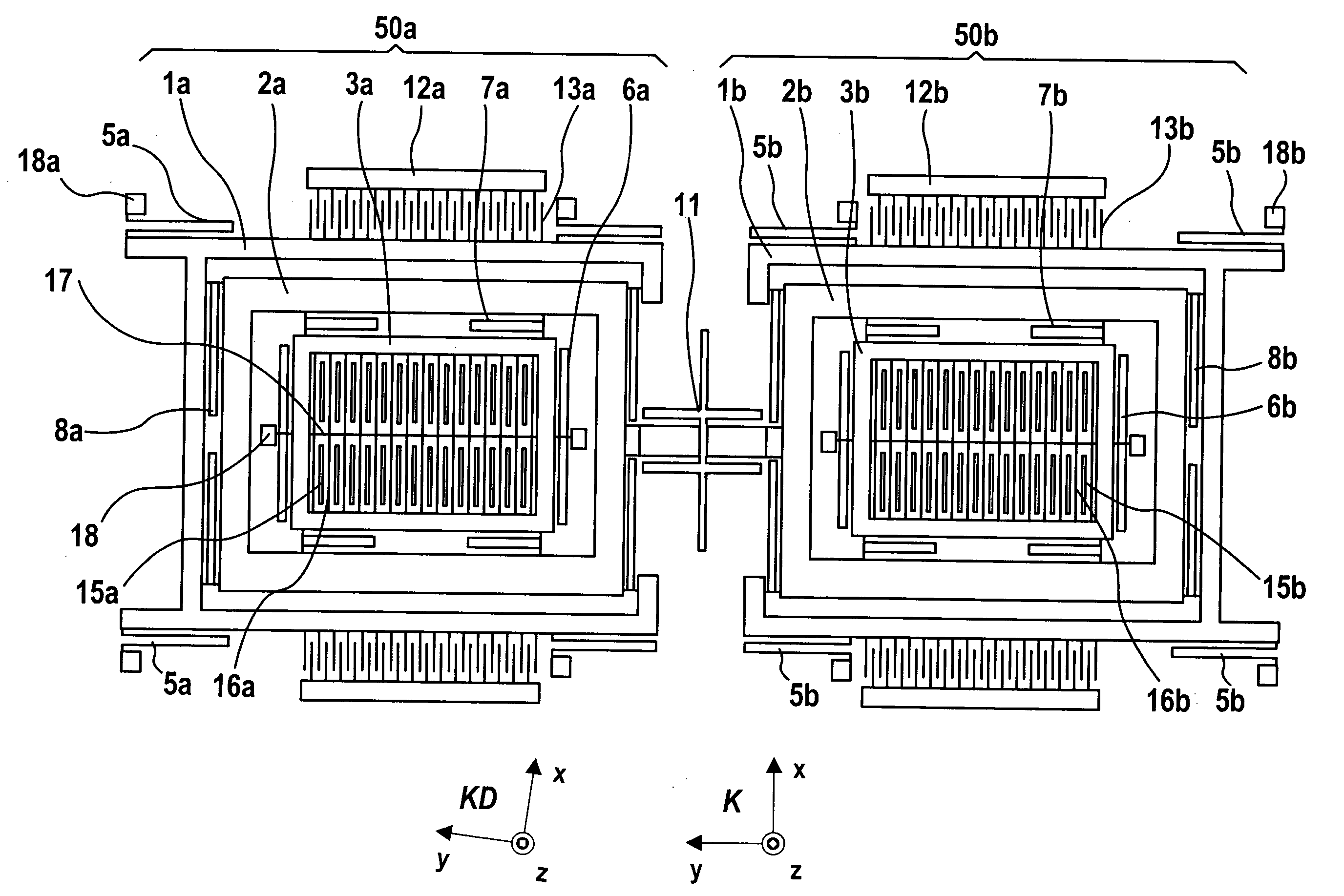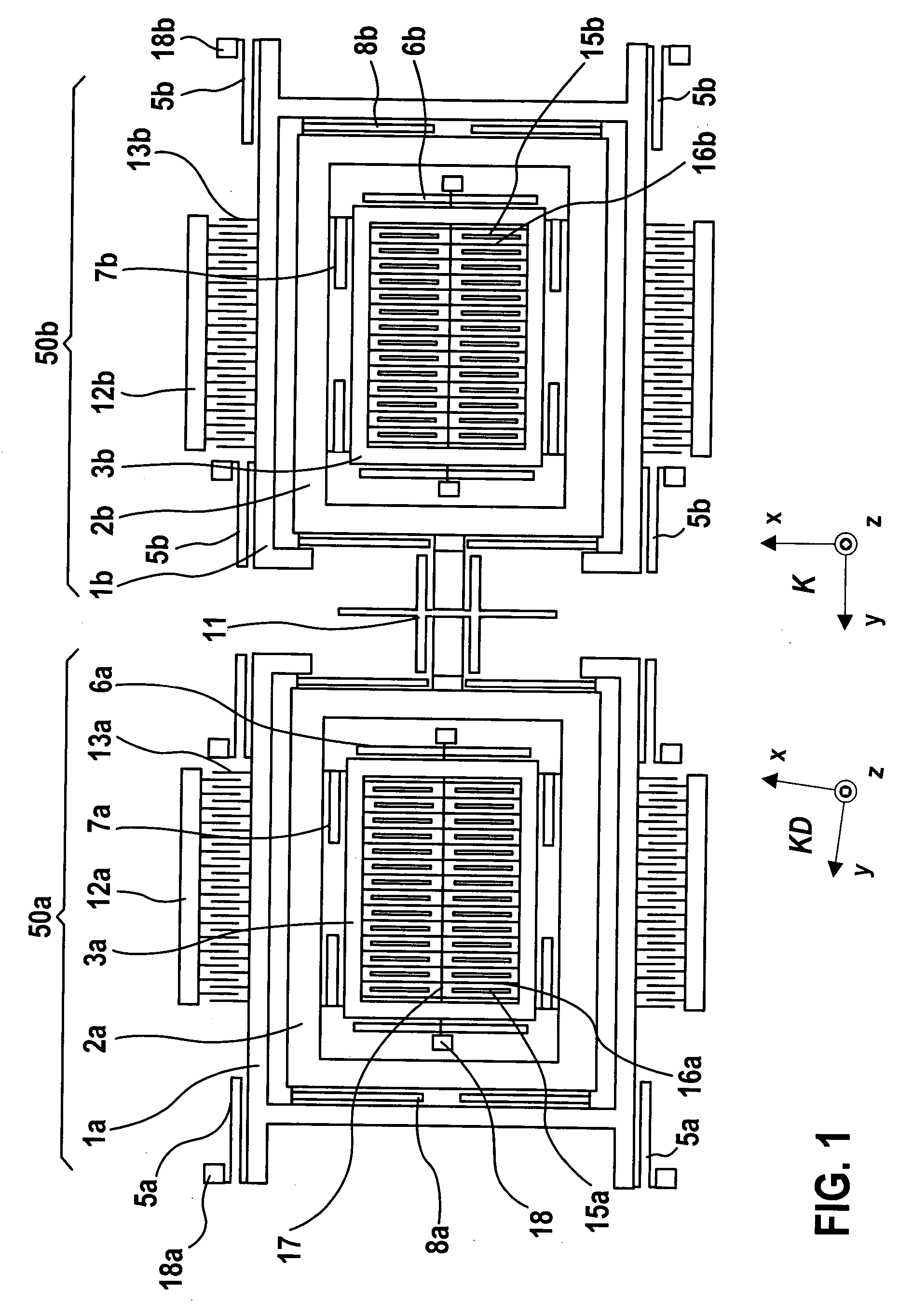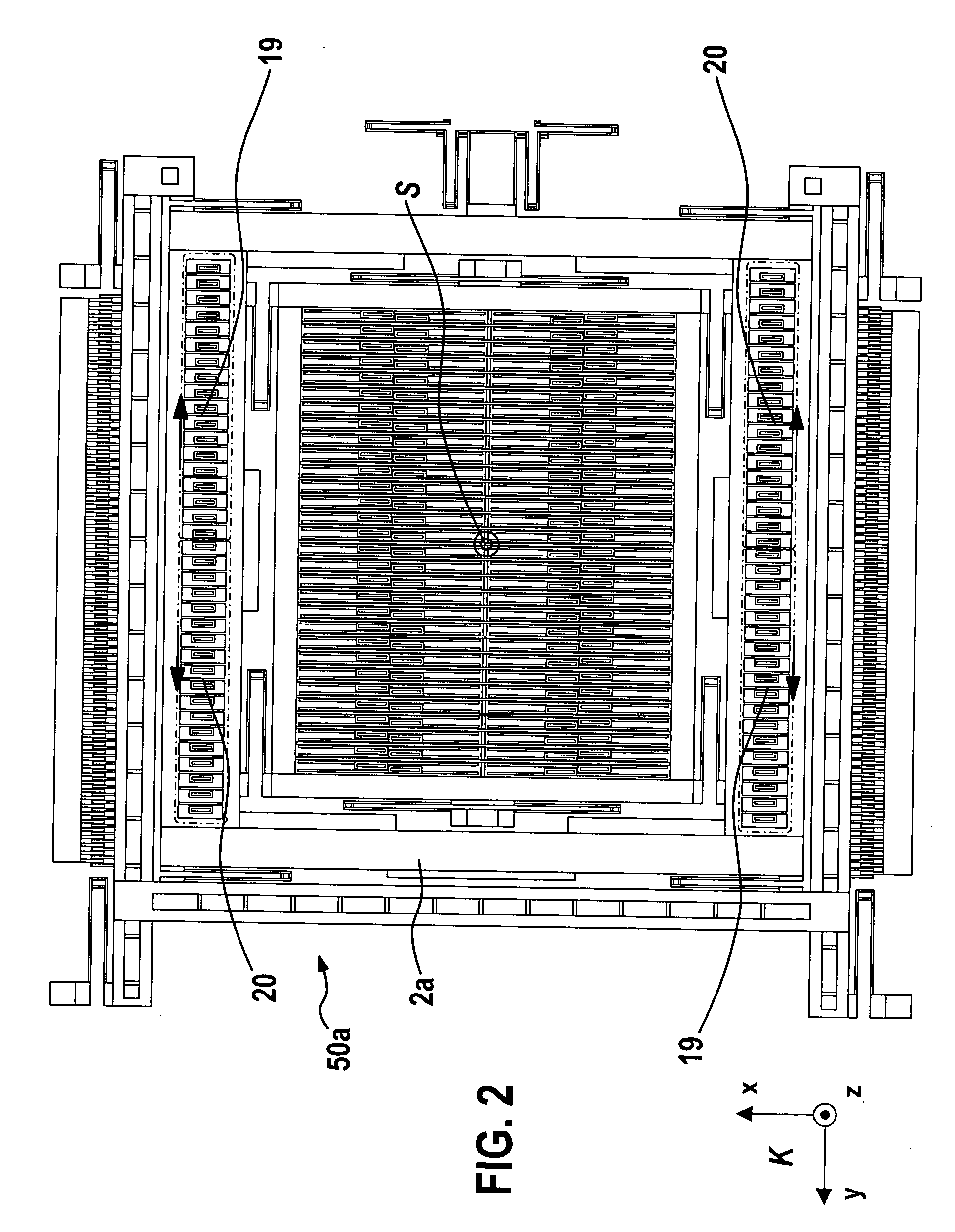Rotational rate sensor
a sensor and rotational rate technology, applied in the direction of acceleration measurement using interia force, turn-sensitive devices, instruments, etc., can solve the problems of increasing the dynamic range requirements, increasing the noise of the sensor, and a process that is costly and often iterative as well as tedious
- Summary
- Abstract
- Description
- Claims
- Application Information
AI Technical Summary
Problems solved by technology
Method used
Image
Examples
Embodiment Construction
[0018] A possible embodiment of the method according to the present invention for static quadrature compensation is shown below using as the example a micromechanical rotational rate sensor. The method may be applied to a special class of rotational rate sensors. In this context, this involves linearly vibrating vibration gyroscopes. An exemplary embodiment of the present invention is explained below, first of all the essential functional components of the rotational rate sensor being briefly described in the light of the rough illustration of FIG. 1, for an understanding of the procedure of the present invention.
[0019] FIG. 1 shows the top view of the structured parts or rather, the structure of a rotational rate sensor or a rotational rate sensor element, the substrate lying under the particularly micromechanically structured structure of the rotational rate sensor not being shown, for reasons of clarity.
[0020] Silicon is preferably used as the material for the substrate and for t...
PUM
 Login to View More
Login to View More Abstract
Description
Claims
Application Information
 Login to View More
Login to View More - R&D
- Intellectual Property
- Life Sciences
- Materials
- Tech Scout
- Unparalleled Data Quality
- Higher Quality Content
- 60% Fewer Hallucinations
Browse by: Latest US Patents, China's latest patents, Technical Efficacy Thesaurus, Application Domain, Technology Topic, Popular Technical Reports.
© 2025 PatSnap. All rights reserved.Legal|Privacy policy|Modern Slavery Act Transparency Statement|Sitemap|About US| Contact US: help@patsnap.com



